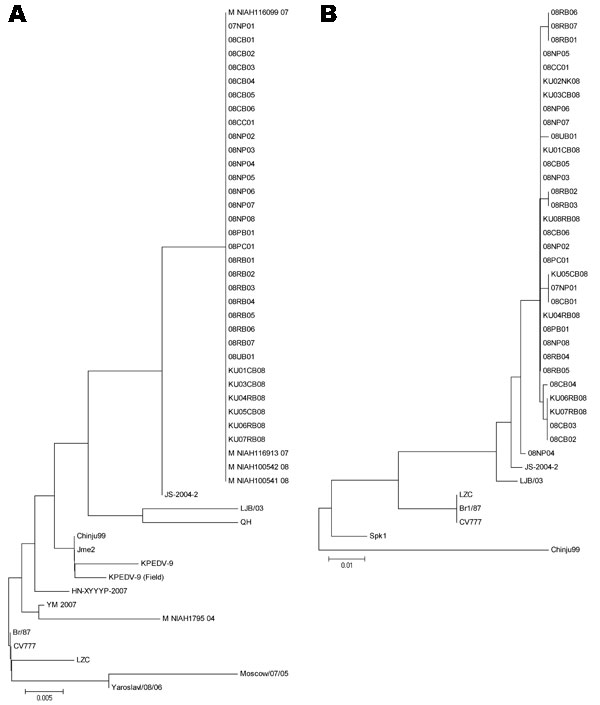Volume 15, Number 7—July 2009
Dispatch
Chinese-like Strain of Porcine Epidemic Diarrhea Virus, Thailand
Appendix Figure

Appendix Figure. Phylogenetic trees generated on the basis of nucleotide of the M gene region (A) and the partial S gene region (B). Trees constructed with neighbor-joining method by using MEGA 3.1 (DNAStar Inc., Madison, WI, USA). Horizontal branch lengths are proportional to genetic distances between Porcine epidemic diarrhea virus (PEDV) strains.
Page created: November 08, 2010
Page updated: November 08, 2010
Page reviewed: November 08, 2010
The conclusions, findings, and opinions expressed by authors contributing to this journal do not necessarily reflect the official position of the U.S. Department of Health and Human Services, the Public Health Service, the Centers for Disease Control and Prevention, or the authors' affiliated institutions. Use of trade names is for identification only and does not imply endorsement by any of the groups named above.